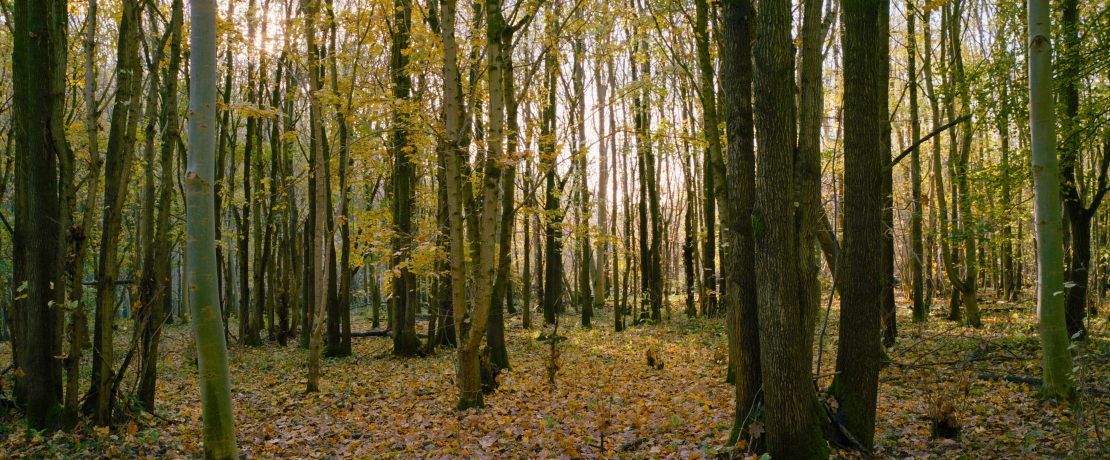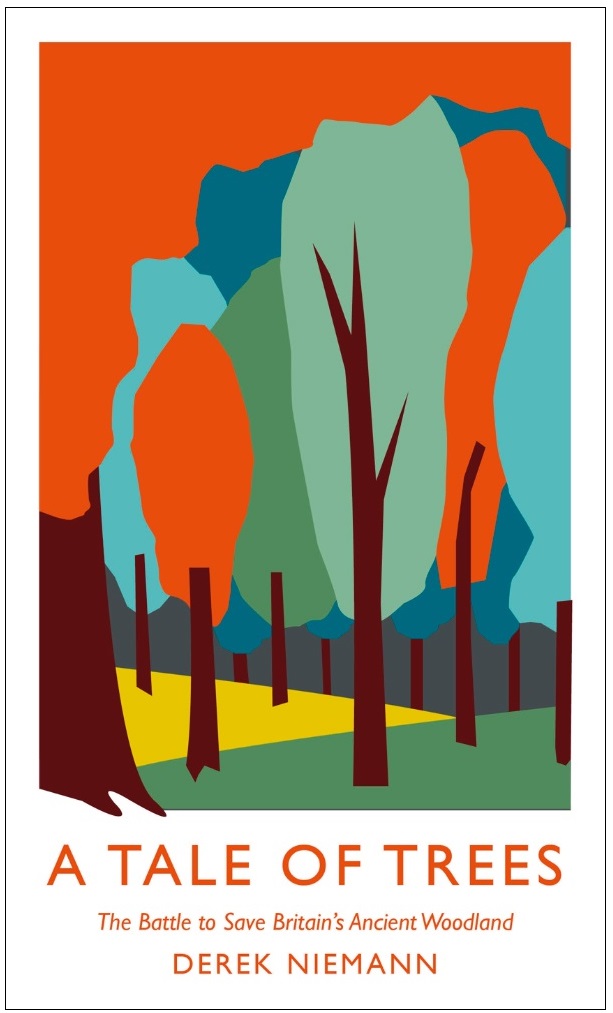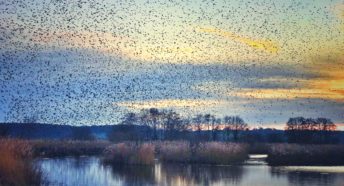A day in the life of the woodsman
In an extract from his acclaimed book, A Tale of Trees, writer and historian Derek Niemann describes a morning in his beloved Waresley Wood in Cambridgeshire, engaged in the ancient art of coppicing – cutting down trees to stimulate new growth from the stump.
Graham the Warden is a computer programmer clad in khaki and steel-capped boots, a volunteer like the rest of us, carrying hand tools that allow for conversation and the calls of birds.
All five of us in our work party have chosen to come here on our day off, for a morning of coppicing, to enjoy ourselves, to feel good about doing something useful.
We were told we would be cutting a coupe, a rectangular block of the wood that had last been coppiced fourteen years ago. We didn’t need to be told the time frame; every cut end showed fourteen rings radiating out from the first tiny circle of seedling growth.
In no time, we had cut a ‘cord’: a stack of 1.2-metre-long logs, held in place by posts rammed into the ground 2.5 metres apart, and piled up to a height of 1.2 metres. Fourteen years to grow so much firewood. And fourteen years in the growing cycle before that.
And so on and so on for a thousand years or more. No fertiliser, no manure, a limitless, sustainable supply of fuel.
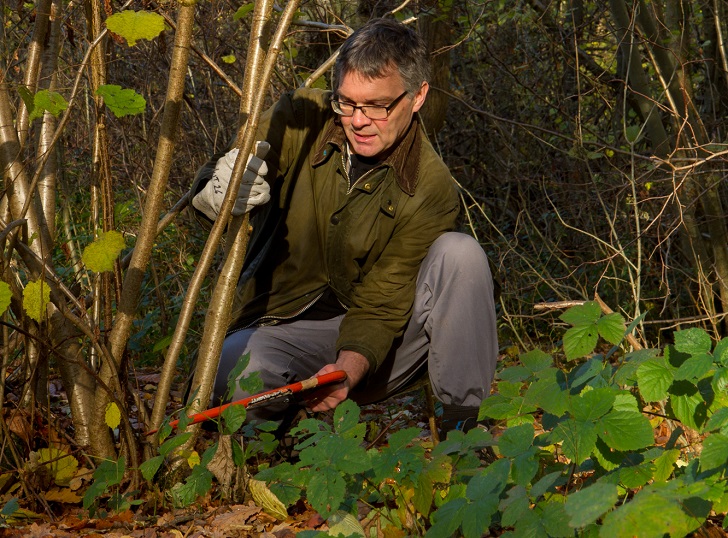
A sense of history and belonging
On this short, wet, winter’s day, however, I am sawing and pondering at the same time. I guess that for the best part of a thousand years, two men were gainfully and fully employed here in Waresley Wood as woodsmen for the six colder months of the year, when there was no work for them on the farms.
Today, I can sense their spirits in the trees, observe their handiwork at the mossy base of the broadest ash stools, and make out where they cut stems and left the stumps for another generation to work after they had hung up their billhooks.
I can feel history here, a sense of belonging to a lowly lineage of woodcutters, a continuity stretching back to the Domesday Book of 1086, when Swein of Essex was overlord, and the surrounding fields were good for nine ploughs.
Coppicing was practised in all the parts of England and the border counties of Wales covered by the survey. Every village had its smithy, reliant on charcoal from coppiced trees. Even the humblest hovel needed firewood and coppicing provided it.
Creating the conditions for growth
One of the great unexpected joys of coppicing is that it’s easier than it looks – at least to begin with. Another is that you can get quick results.
A huge, splayed-out bush can be reduced in minutes to a knobbly stool and in no time the trimmings (the ‘lop and top’), still in leaf, can be piled up over the stool to dissuade deer from biting off the first growth of spring.
Cut stumps show accusatory yellowing faces, but the tree will revive; the coppice is a sustainer of life. The words ‘vigorous regrowth’ get used a lot.
And while we are stomping around off the path in our boots, inadvertently scuffing and scraping the ground, we are creating the conditions for next year’s flowers to grow.
Andy Byfield of Plantlife explained to me with the glee of a scientist who is revealing something wonderful, the random, accidental scars on the ground that will give rise to the next generation of flowers.
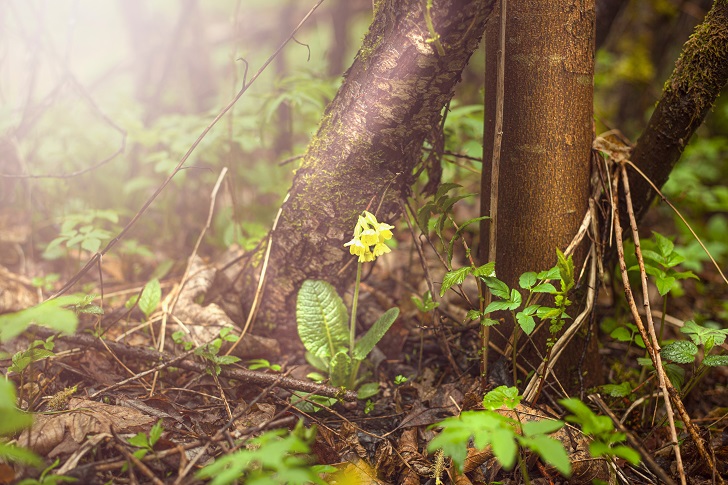
A single oxlip can live for years, shedding its seeds every spring. However, the seeds fall on the previous year’s leaf litter and mulch, and are suspended without purchase for their roots in a loose pile of rot, so cannot grow.
But the seeds can find a roothold in the exposed patches of bare earth that have been scraped clear. Coppicing roughs up the ground, just as wild, extinct animals would have done in millennia past. We coppicers have taken on the natural function of old boars.
An invisible resurrection
There are parts of the wood that no coppicer’s blade has touched in living memory. I let my eyes wander through the trees in one of these abandoned parts of the wood and they rested on a three-pronged ash leading an interesting life and death.
Maybe a century since it was last coppiced, its stool was like a hollowed-out cauldron, lined with moss. The three trunks, each as thick as my waist, growing out in different directions, had met with varying fortunes.
One leaned outwards steeply as if on the point of collapse. Another had toppled to the floor decades before and was in a crumbly state of advanced decomposition.
The third fallen trunk appeared dead too. All but detached from the stool, it was specked with white fungus at its broken end. A rack of bracket fungus was growing on it, and there were six finger-sized puncture holes in the wood.
But some way down the rotting beam, there was new life: two side branches had shot up at right angles to the dying log, and thickened to become new trunks with their own branches and twigs full of leaves, raised in response to gravity, sustained in the earth by an invisible resurrection of roots out of the old trunk. The tree had effectively walked.
A Tale of Trees: The Battle to Save Britain’s Ancient Woodland features the voices of those who cut down the woods and those who saved what was left. It is a story full of tragedy and heroism that will inspire the reader to explore ancient woods and delight in their natural treasures. This extract is published with the kind permission of the author and Short Books.
Read more from Derek Niemann at whispersfromthewild.co.uk and enjoy his Country Diary columns in The Guardian.
